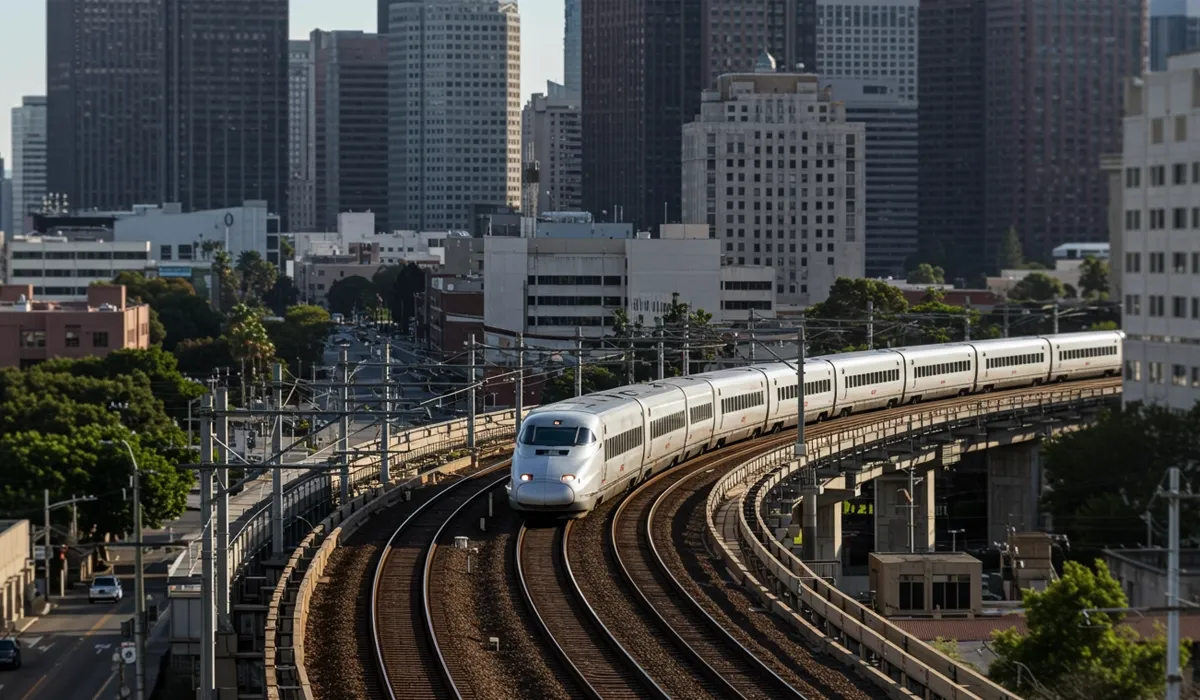Overview of the Intermodal Railyards

The Commerce Rail Yard Complex, operated primarily by BNSF Railway and Union Pacific, features the Hobart Yard and Commerce Yard, handling containerized imports, automotive, and bulk commodities with direct links to the Ports of Los Angeles and Long Beach.

Commerce’s intermodal terminals, including BNSF’s Hobart Intermodal Facility, provide seamless transfer between rail and truck, supporting high-throughput operations with on-dock rail, automated gate systems, and 24/7 service for expedited cargo movement.
Market Size and Economic Impact
Commerce, CA processes over 2.5 million TEU annually through its intermodal terminals, supporting more than 10,000 direct and indirect jobs. The rail hub generates an estimated $1.2 billion in annual economic impact, ranking among the top five inland rail centers in the United States.
Competitive Landscape
- BNSF Railway: Hobart Yard is the largest intermodal rail facility in the western U.S., handling up to 1.5 million lifts per year
- Union Pacific: Commerce Yard supports automotive, manifest, and intermodal operations with direct port and national connections
- Third-Party Logistics: Major 3PLs and drayage operators maintain dedicated facilities for transloading and regional distribution
Opportunities
- E-commerce Surge: Growth in online retail drives demand for rapid intermodal and last-mile logistics solutions
- Inland Port Expansion: Opportunities to increase capacity through terminal automation and off-dock support facilities
- Cross-Border Trade: USMCA and nearshoring trends boost transcontinental rail flows and regional warehousing demand
Challenges
- Congestion: High train and truck volumes create bottlenecks at terminal gates and regional highways
- Air Quality: Regulatory pressure to reduce emissions from locomotives and drayage trucks impacts operations
- Land Constraints: Limited space for expansion in a densely developed urban-industrial corridor
Trade and Logistics Trends
- Intermodal Growth: Containerized imports from Asia drive record rail volumes through Commerce
- Automotive Traffic: Steady flows of finished vehicles and parts support regional manufacturing
- Port Connectivity: Direct rail links to LA and Long Beach sustain high-frequency shuttle operations
Future Outlook
- Terminal Modernization: Planned investments in automation and expanded track capacity at Hobart and Commerce Yards
- Zero-Emission Initiatives: Deployment of electric drayage trucks and hybrid locomotives to meet air quality targets
- Logistics Real Estate: New warehouse developments and cold storage facilities to support diversified cargo flows
Recommendations
- Capacity Upgrades: Accelerate double-tracking and yard expansion to accommodate projected volume growth
- Emissions Reduction: Invest in clean energy infrastructure and alternative fuel equipment for sustainable operations
- Workforce Development: Expand training programs for skilled rail, logistics, and maintenance personnel
Commerce, CA
Commerce serves as the central node in Southern California’s freight network, connecting the Los Angeles basin to national rail corridors and supporting a metropolitan region of over 18 million residents.
Commerce’s strategic location eight miles from the Ports of Los Angeles and Long Beach positions it as the primary inland gateway for Pacific Rim imports, with direct access to I-5, I-710, and transcontinental rail corridors.
Where you'll go
Things to know
Rail Operations
Rail Gateway: Commerce’s first major rail yards opened in the 1920s, fueling industrial growth in southeast Los Angeles County
Facilities & Services
Inland Advantage: Proximity to the ports and major freeways enables rapid transloading and regional distribution
Location Benefits
Economic Engine: Home to over 1,800 businesses, Commerce’s logistics sector drives regional employment and tax revenue
Additional Information
Innovation Cluster: The area’s concentration of intermodal, warehousing, and supply chain technology firms fosters operational efficiency